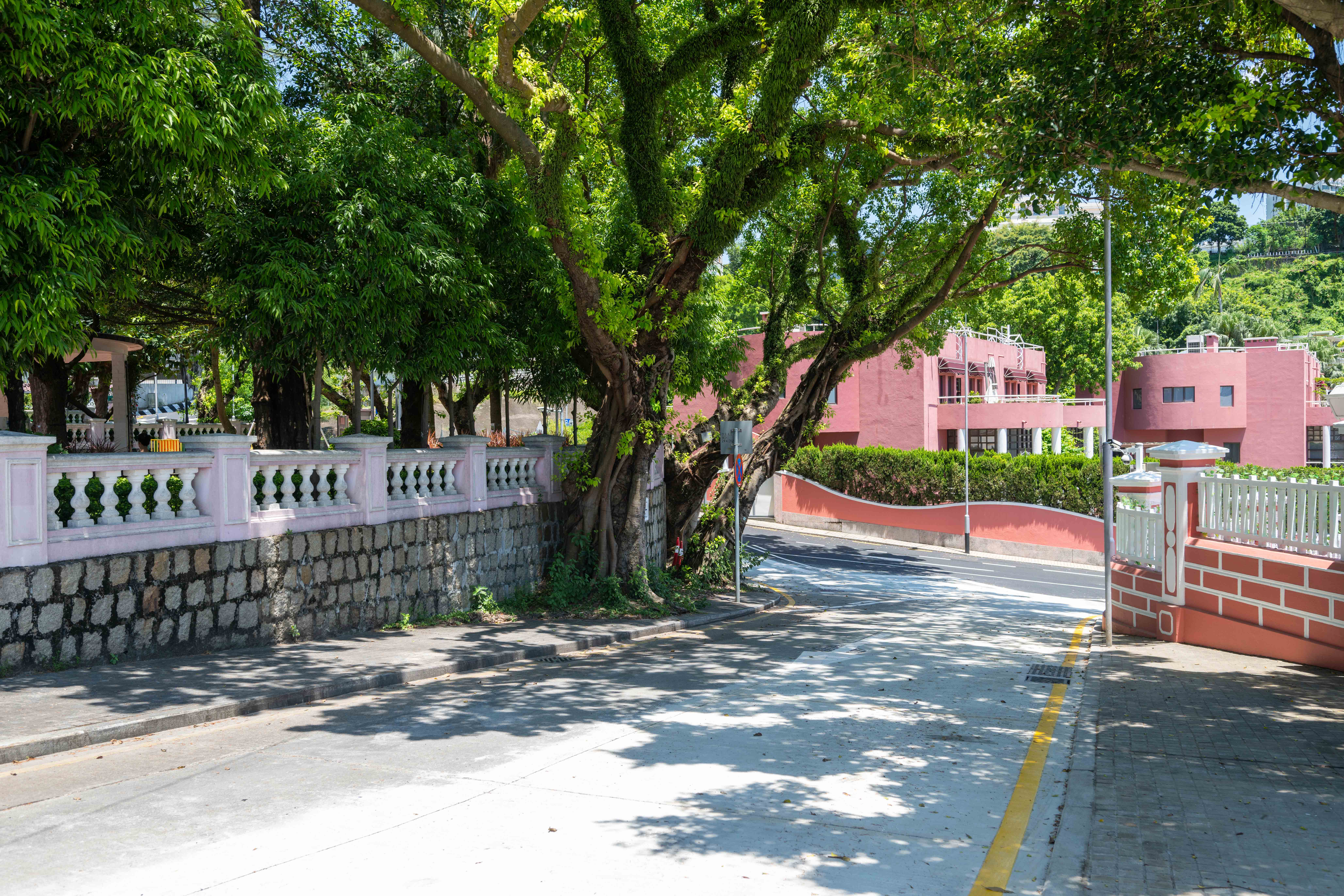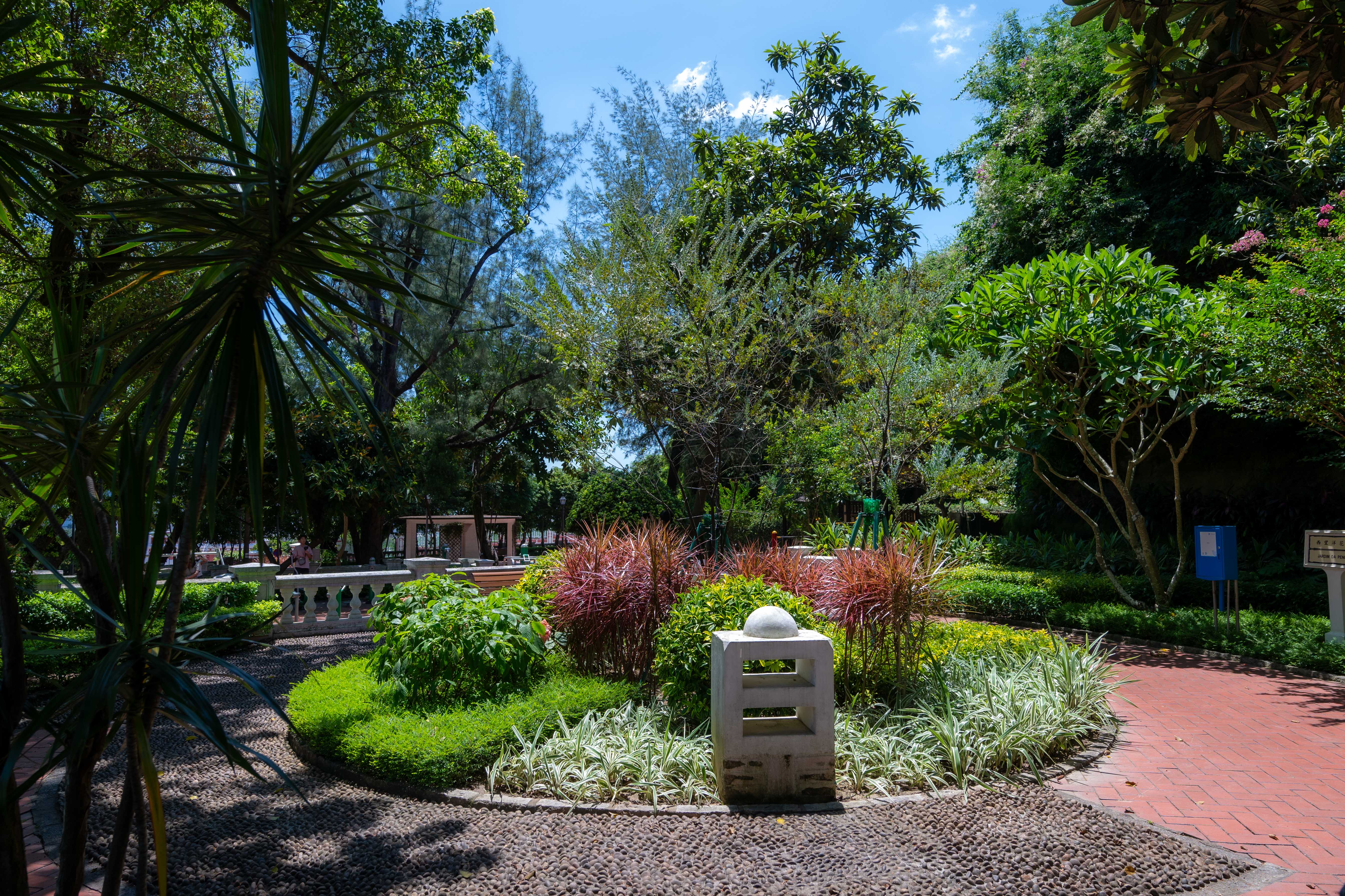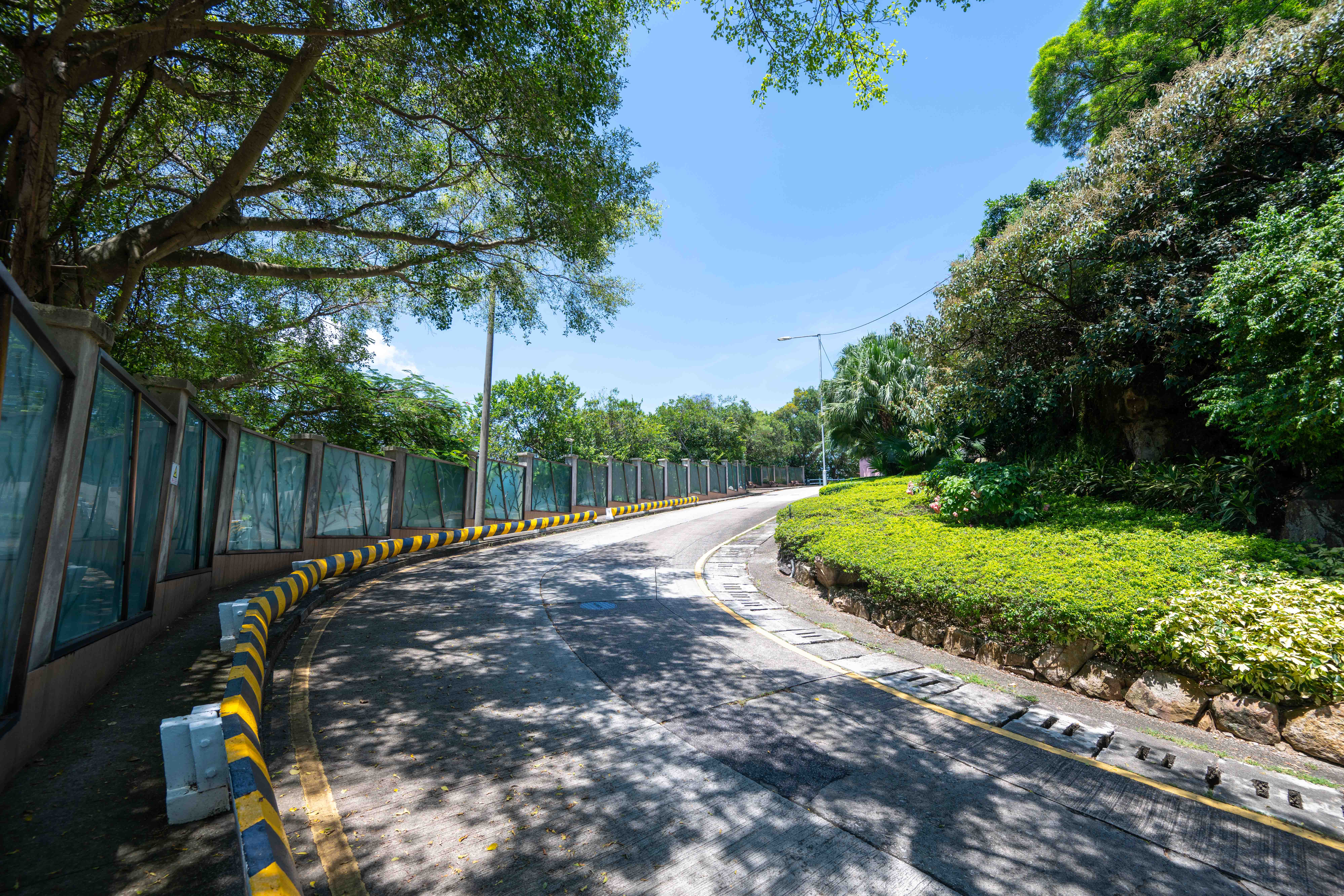
Estrada da Penha
Estrada da Penha is a road around the hill, located in the northwest of the Parish of São Lourenço, about 1,300 metres long and approximately 8 metres wide. It encircles the Penha Hill and stretches out to the Barra Hill. Its name was recorded in “Cadastro das Vias Públicas de Macau” (Cadastre of Public Roads of Macao) in 1957. Built around the hill, it was named “Estrada da Penha” in Portuguese, which means “a road passing through mountains and rocks”.
Estrada da Penha is divided into two sections. The northwest section that joins Rua do Comendador Kou Hó Neng is also known as “Estrada de Santa Sancha” to differentiate itself from the other section. At the top of the Penha Hill, there is the Fortress of Nossa Senhora da Penha, where a viewing platform is built for sightseeing. The fortress was constructed in 1622. In the same year, the Chapel of Nossa Senhora da Penha was built, which is included in the “List of Macao Heritage” as one of the “structures of architectural art value”.
The southeast section of Estrada da Penha stretches out to the Barra Hill. At the southwest foot of the Barra Hill, there is the famous Pousada de São Tiago constructed from an ancient fortress. The northwest section of Estrada da Penha is also known as “Estrada de Santa Sancha”, named after a famous building called “Santa Sancha Palace”. Before Macao’s return to China, the palace was the official residence of the Governor of Macao, and is currently the Macao SAR Government Headquarters to receive guests. Its walls are painted in pink in a unique style, attracting the attention of many passers-by.
Estrada da Penha is divided into two sections. The northwest section that joins Rua do Comendador Kou Hó Neng is also known as “Estrada de Santa Sancha” to differentiate itself from the other section. At the top of the Penha Hill, there is the Fortress of Nossa Senhora da Penha, where a viewing platform is built for sightseeing. The fortress was constructed in 1622. In the same year, the Chapel of Nossa Senhora da Penha was built, which is included in the “List of Macao Heritage” as one of the “structures of architectural art value”.
The southeast section of Estrada da Penha stretches out to the Barra Hill. At the southwest foot of the Barra Hill, there is the famous Pousada de São Tiago constructed from an ancient fortress. The northwest section of Estrada da Penha is also known as “Estrada de Santa Sancha”, named after a famous building called “Santa Sancha Palace”. Before Macao’s return to China, the palace was the official residence of the Governor of Macao, and is currently the Macao SAR Government Headquarters to receive guests. Its walls are painted in pink in a unique style, attracting the attention of many passers-by.
Last Update :
Please use Chrome.
© Municipal Affairs Bureau, All rights reserved
Please use Chrome.
© Municipal Affairs Bureau, All rights reserved













